A photo from our series “Math sculptures in context”. To purchase the models used in the photo and others, follow the links to our producer “shapeways” provided below.
It was back in the 1872 Göttingen, Germany, at a meeting of the scientific society. Alfred Clebsch (1833-1872), a very well-known figure in the math world at the time, and the young Felix Klein (1849-1925) each presented a very interesting mathematical plaster model, at the very same meeting. It turned out that both became some of the best known mathematical models of all times.
Our photo shows white 3D-printed modern versions of these created by MO-Labs, in front of their portraits. The setting was created in the MO-Labs office, inside a dollhouse built just for taking photos of math sculptures in historical environments. Alfred Clebsch’s portrait is taken from wikipedia, Felix Klein’s rare photo at a younger age was taken from the website of the technical university Munich. In the front, on the sofa, is a tiny version of a so-called discriminant surface, sometimes called a swallowtail.
The wallpaper is not a historical design, but a 21st century piece of art which uses typography in a way similar to brush strokes with ordinary paintings. It was created by www.artefont.com.
MO-Labs sculptures used: Clebsch’s Diagonal Surface
To purchase our best selling version of Clebsch’s Diagonal Surface, just click on its image at the left. You will be sent to our MO-Labs shop on the “shapeways” website, so that you can choose the material and color there, and the let “shapeways” produce the object for you and send it to you in really short time.
We have designed a large variety of Clebsch Diagonal Surface sculptures, in one color, or with differently colored lines, or even together with two related planes.
In the MO-Labs shop on “shapeways”, you will also find versions in different sizes and at very different prices, from tiny and cheap to large and more valuable.
MO-Labs sculptures used: Klein’s Cubic with four singularities
To purchase our best selling version of Klein’s Cubic with four singularities, use the link provided next to the image. You will be sent to our MO-Labs shop on the “shapeways” website, so that you can choose the material and color there, and the let “shapeways” produce the object for you and send it to you in really short time.
We have designed several different versions of Klein’s cubic with four singularities, in one color, or with colored lines.
MO-Labs sculptures used: The Swallowtail
To purchase our tiny version of the swallowtail shown in the photo, just click on its image above. You will be sent to our MO-Labs shop on the “shapeways” website, so that you can choose the material and color there, and the let “shapeways” produce the object for you and send it to you in really short time. More about the fascinating story and math behind the swallowtail will be explained in a later post.
Alternatively, you may also choose a version at a larger scale within our shop at “shapeways”.
Some math: Cubic surfaces
Both large models represent examples of so-called cubic surfaces in three-space. These are surfaces defined by an equation of degree three in three variables x,y,z. For those who don’t know about cubic surfaces: In other posts we will go deeper into what these are.
First important properties of cubic surfaces were discovered around the middle of the 1800s. One of the most famous facts is that any smooth cubic surface contains 27 straight lines. This may come as a surprise when looking at the nicely curved shapes in the photo, but it is true (at least over the complex numbers, and when taking points at infinity into account).
Our model in the picture is Clebsch’s example (the so-called Diagonal Surface) featuring 27 straight lines, all of which are real and all of which are visible in this beautiful shape.
Series: Math sculptures in exceptional settings
This January 2017 photo is the beginning of a monthly series of photos of mathematical sculptures in exceptional settings. We use these and other posts on this site to show, describe, and make available for purchase our several hundred designs of mathematical sculptures. Over the time, we will tell you why the historical versions (by Clebsch and by Klein) of the two large models became so famous, and why we placed the tiny swallowtail next to them. Subscribe to our blog to get notified of these and other math sculpture posts.

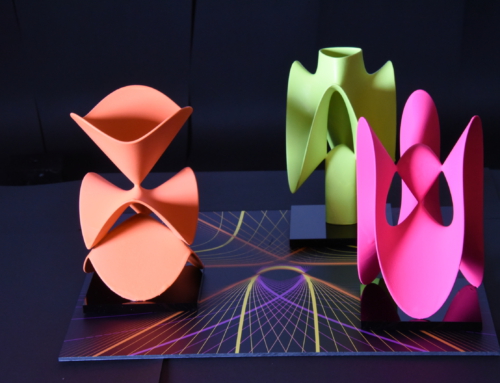
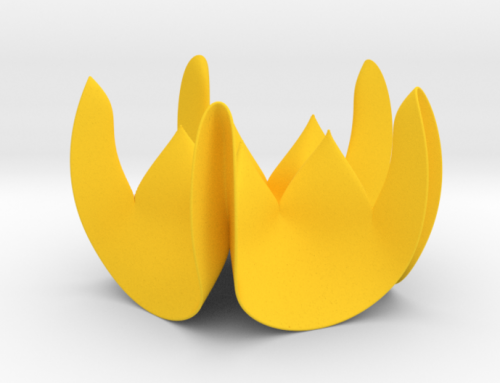
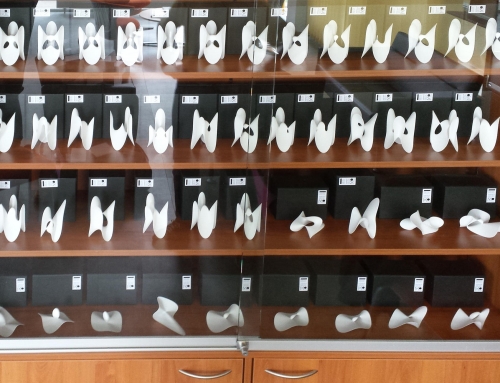
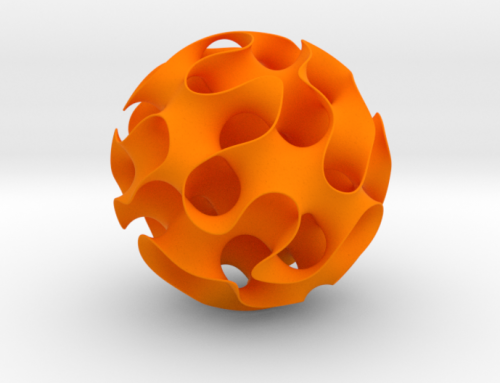
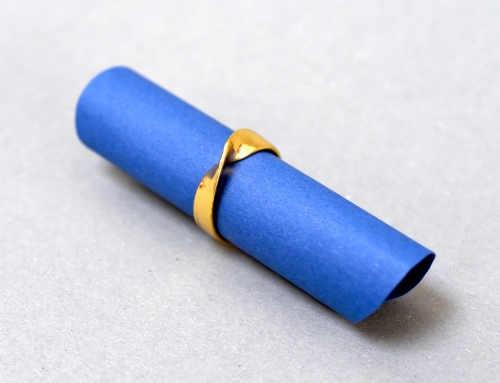
Leave A Comment